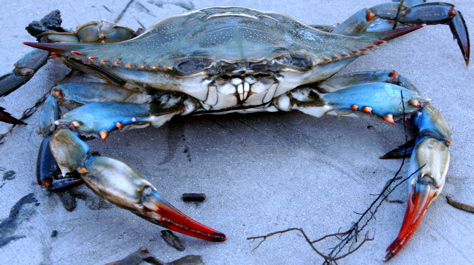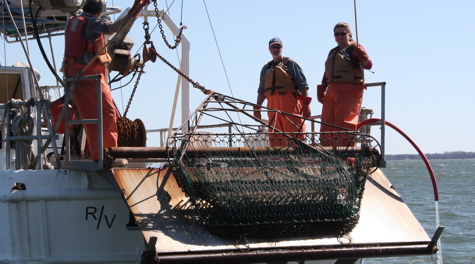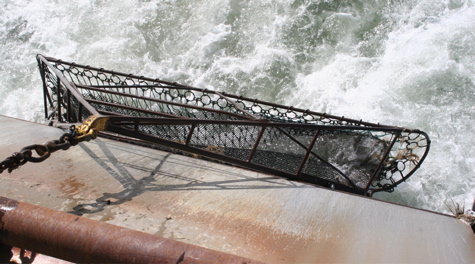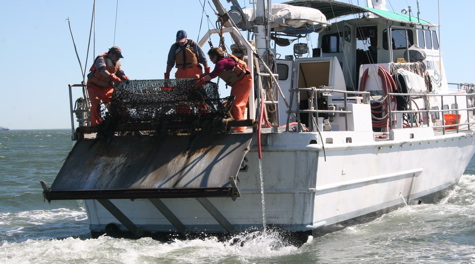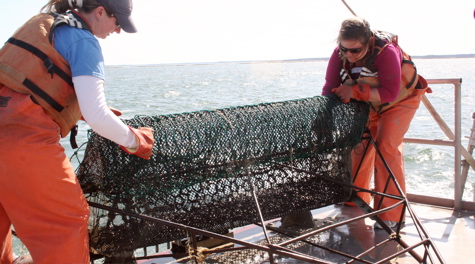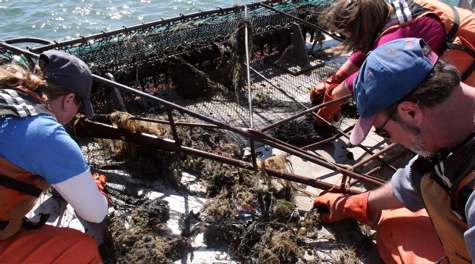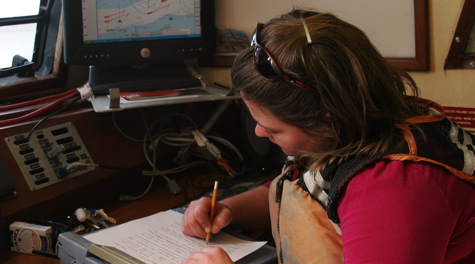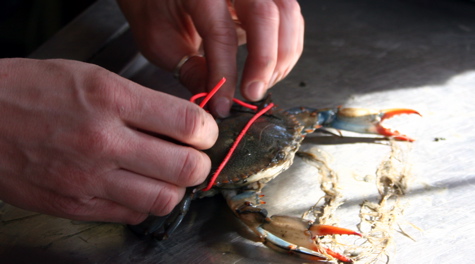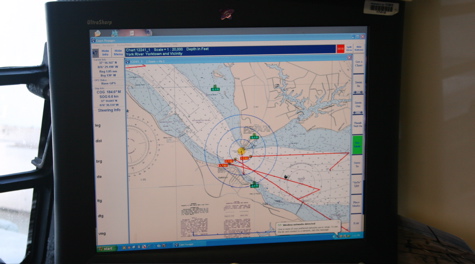Blue crab population booms
Virginia Governor Bob McDonnell and Maryland Governor Martin O'Malley today announced the Chesapeake Bay blue crab population has surged for the second year in a row because of a landmark stock rebuilding program. The latest survey estimates the population has risen to 658 million crabs, a 60 percent increase from last year and the highest seen since 1997. The population estimate is the result of the 2009-2010 bay-wide winter dredge survey conducted annually by the Virginia Institute of Marine Science (VIMS) and the Maryland Department of Natural Resources (DNR).
Speaking about today's announcement, Governor McDonnell remarked, "Protecting and improving the Chesapeake Bay, including the blue crab population, was a priority I outlined during my campaign. This is shaping up to be a tremendous environmental success story. The crab population is booming. Harvests are up. Our commercial crabbers' jobs and the waterman's way of life now appear to be on the path to sustainability. This is great news for everyone who makes their living by crabbing and for everyone who enjoys genuine Chesapeake Bay crab cakes and she-crab soup."
Governor McDonnell continued, "While great strides have been made to rebuild our environmentally and economically important crab population, more work remains to be done with our steadfast Maryland partners. Two years does not make a trend. The scientific evidence shows our management measures are working but we need to continue along this path in order to ensure the Bay's crab population returns to robustness and remains at that level. Improving the Bay and the blue crab population will continue to be a priority of mine over the next 4 years."
Governor O'Malley also commented, "Today, we can see firsthand what progress looks and feels like on the Chesapeake Bay. Today, because of the unprecedented partnership between Maryland and Virginia and tough decisions over the past 2 years, the Chesapeake Bay blue crab population is estimated to be 658 million crabs—a 60 percent increase over last year and the highest total population estimate since 1997. While we are making progress, our work is not done and we are committed to working with our partners to achieve our ultimate goal of a self-sustaining fishery that will support our industry and recreational fisheries over the long term."
Rom Lipcius, who directs the Virginia component of the dredge survey for VIMS, said, "The substantial rise in abundance of mature crabs and juveniles was clearly a response of the crab population to unprecedented management actions, such as the closure of the winter dredge fishery, by the Virginia Marine Resources Commission and partner agencies. The increase was neither a random event nor a reflection of improved environmental conditions. From here on, we have to maintain the population at these levels to ensure the long-term sustainability and resilience of the Chesapeake Bay stock."
Virginia Secretary of Natural Resources Doug Domenech noted, "Our watermen are due gratitude for their endurance during this stock rebuilding, and for their conservation efforts. With more crabs in the water, watermen should see bigger harvests with less effort and fewer costs. The Virginia Marine Resources Commission deserves credit for its steadfast resolve to enact and maintain the regulations necessary to rebuild the crab fishery with our partners in Maryland."
The results of the most recent annual winter crab dredge survey indicate 2008 management measures enacted as part of a historic collaboration with Maryland and the Potomac River Fisheries Commission are succeeding but not completed. Two years ago, that survey estimated the bay-wide blue crab population to be a mere 298 million crabs, prompting a series of coordinated harvest reduction strategies by Virginia, Maryland, and PRFC fishery managers. Last year, the survey estimated 403 million crabs overwintered in the Chesapeake Bay.
The new survey also shows a baby boom—an almost doubling of the number of juvenile crabs, making it the largest new generation of crabs since 1997 and an encouraging development that wasn't seen last year.
In 2008, Maryland, Virginia and the PRFC took strong, coordinated action to reduce harvest pressure on female crabs by 34 percent. At that time, scientists from all 3 jurisdictions deemed conservation measures necessary as blue crab suffered near historic lows in spawning stock.
The 2008 conservation measures resulted in a large increase in the number of adults in the bay during the 2009 spawning season, and this year's survey confirms that success has carried over into a healthy spawn. Crab reproduction this year was the sixth highest in the 21-year survey. The abundance of both adult female and male crabs also rose again this year, bringing the estimated number of spawning-age crabs to 315 million, well above the interim target level of 200 million.
In seven of the 10 years between 1998 and 2007, the annual removal of blue crabs bay-wide exceeded the "safe" removal level of 53 percent.
Preliminary numbers indicate the 2009 bay-wide harvest was 53 million pounds, the third largest in the past 10 years. Virginia's harvest last year appears to have increased by more than 30 percent, from 17.3 million to 22.5 million pounds.
Despite the increased harvest, last year's bay-wide fishery removal rate was approximately 43 percent, which was lower than the 46 percent target established by scientists, who say this is key to maintaining a healthy population.
The bay-wide blue crab winter dredge survey is the primary survey used to assess the condition of the Chesapeake Bay blue crab population. Since 1990, the survey has employed crab dredges to sample blue crabs at 1,500 sites throughout the Chesapeake Bay from December through March. By sampling during winter when blue crabs are buried in the mud and stationary, scientists can develop, with good precision, estimates of the number of crabs present in the bay.
Estimates of abundance are developed separately for young-of-the-year crabs, mature female crabs, and adult male crabs. Together, these groups of crabs will support the 2010 fishery and produce the next generation of crabs.
In 2008, Virginia and Maryland asked the U.S. Department of Commerce to declare the Chesapeake Bay crab fishery a federal disaster due to the historic low blue crab population. Under that designation, $15 million in crab disaster funds from NOAA‘s National Marine Fisheries Service were appropriated for each state to help rescue the crab population and provide needed economic relief to the commercial fishing industry.
Virginia's crab disaster funds were used to buy back 359 commercial crab licenses in order to reduce actual or potential crab fishing; to employ out-of-work watermen who pulled up 18,000 derelict crab pots over the past two winters; and to train crabbers in shellfish farming.

